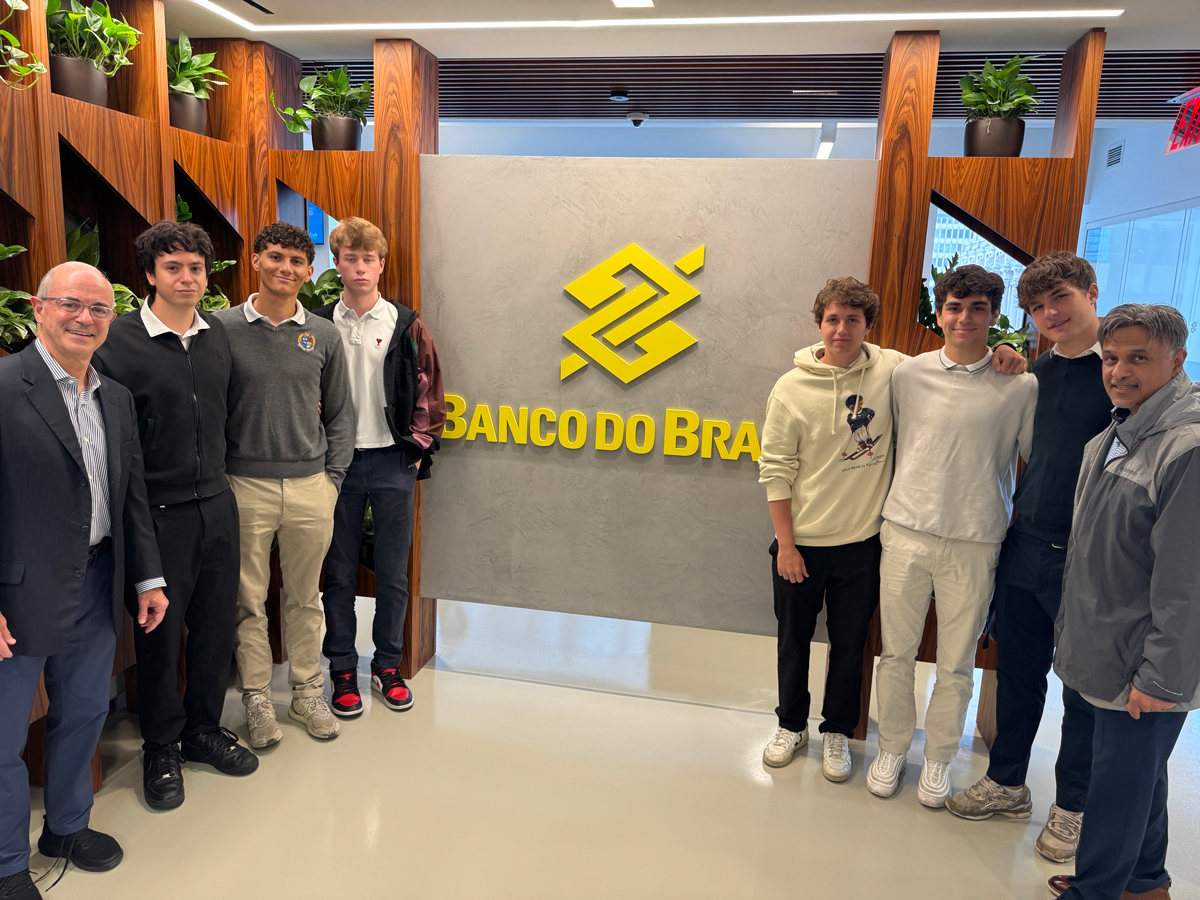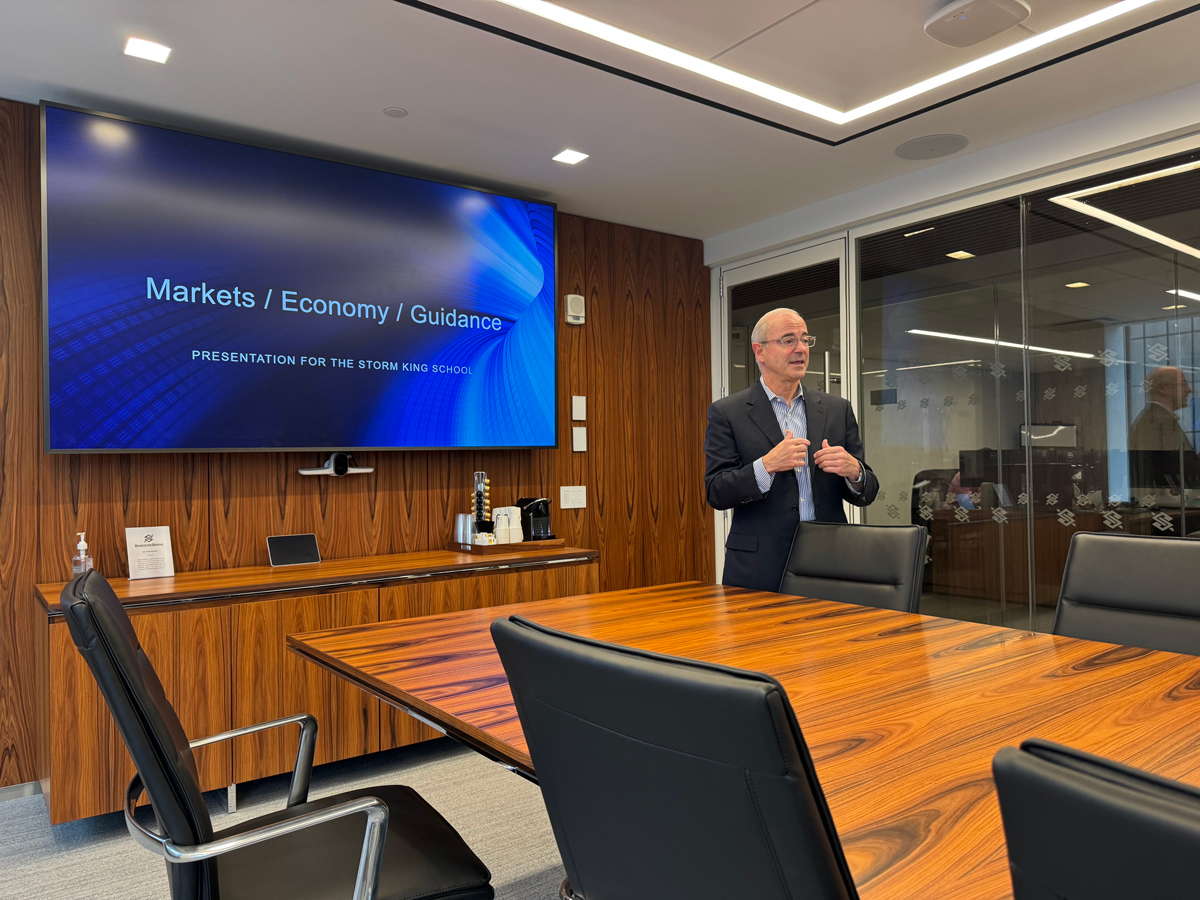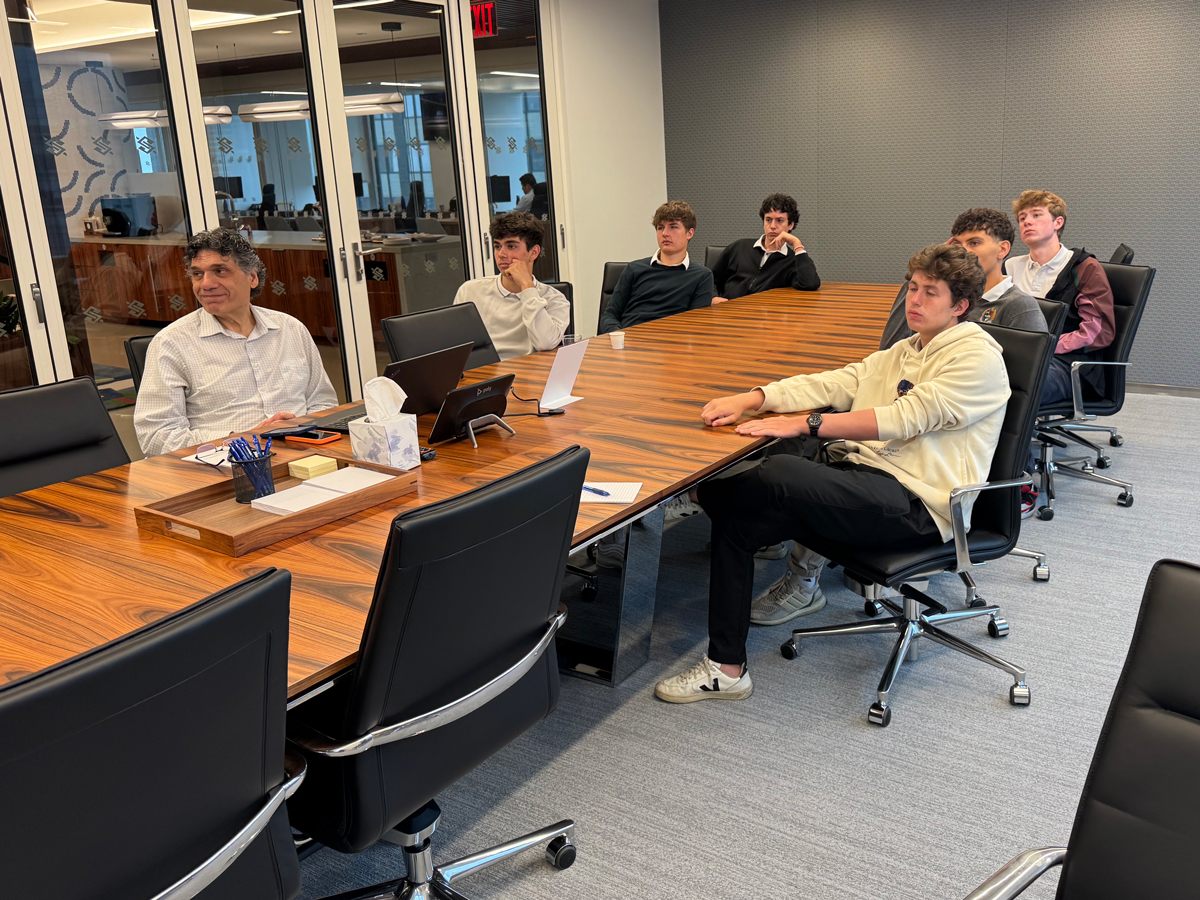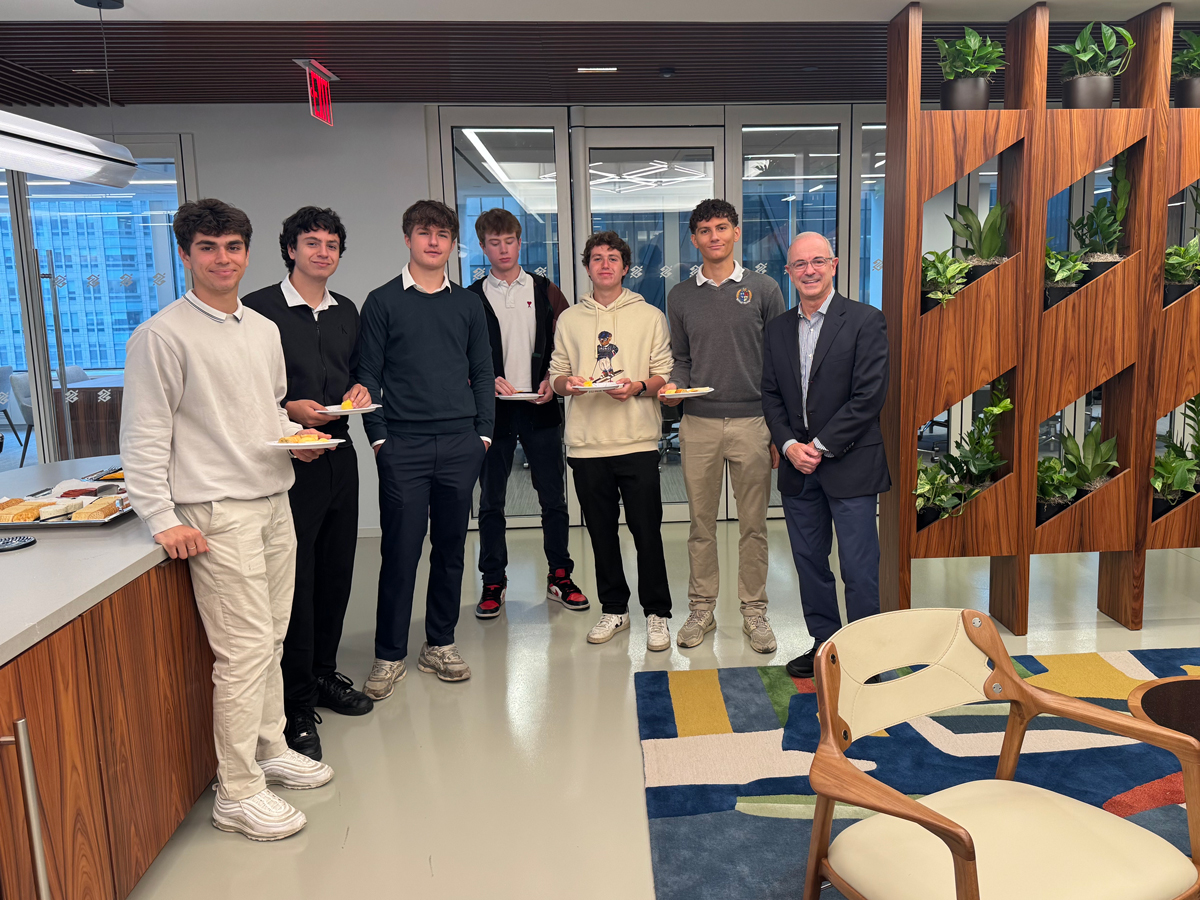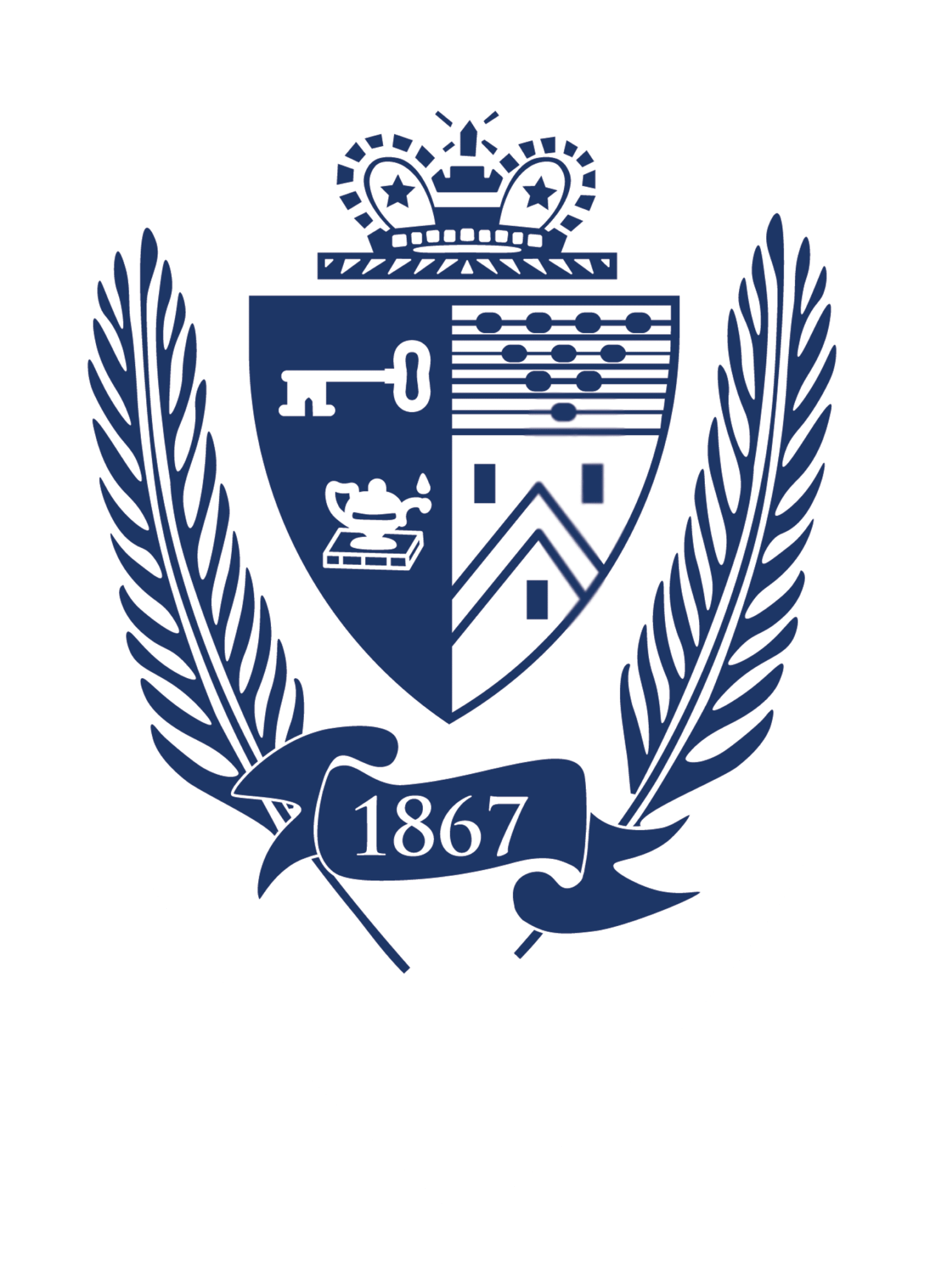Mr. Siddiqui’s Microeconomics class recently had the opportunity to visit Mr. Alessandro Gajano, Treasurer and Deputy Manager at Banco do Brasil in New York City. During the visit, students Matteo G. ’26, Diego V. ’25, Mohanad A. ’25, Ethan B. ’25, Lucas B. ’25, and Ryder H. ’26 gained firsthand insight into the world of bank treasury and corporate operations.
Mr. Gajano discussed how financial institutions manage risk—from interest rates and defaults to external economic shocks—and the role of hedging strategies in stabilizing operations. He also explained how leading and lagging economic indicators help inform decision-making, and how both short- and long-term opportunities are evaluated in a global financial landscape.
For Matteo, the experience was especially impactful given his aspirations. “Mr. Gajano showed us how he manages over $10 billion and explained the criteria his team uses to invest. It was fascinating, especially because I want to work in this same area,” he said. Matteo also appreciated Mr. Gajano’s perspective on crisis periods. “He said those are actually the best moments to push forward. If you stay calm and work harder than the rest, you can achieve strong results.”
The visit also offered practical insights into professional development. Mohanad emphasized the value of advice on how to prepare for job interviews: “How to show up right, how to answer questions, and being prepared for anything were important things to learn.” Diego added that Mr. Gajano’s tips extended beyond interviews to long-term career growth: “He explained how to keep your job, improve, and grow year by year. Even though Mr. Siddiqui already covers this in class, hearing it from someone in the field made it more real.”
Students also appreciated being immersed in the real-world environment of a major bank. “An interesting part of the trip that I’ll remember the most was actually going into the offices doing the exact tasks we were discussing,” said Ryder. “A ‘flight to quality’ really resonated with me—if you’re in a failing field, you need to shift to something relevant.”
Lucas reflected on the deeper messages he took away: “One thing that stood out to me was the idea that failure is a normal part of growth. If your work feels too comfortable, it might be a sign you’re not growing. It’s important to challenge yourself.”
For Diego, the setting made a lasting impression: “The host received us in the best way possible, and being in a formal meeting room made me feel like I was part of the financial world. I learned how the bank supports global and green projects, and how principles from our Microeconomics class are applied in real life.”
Mr. Gajano also spoke about the influence of political decisions on financial systems, the value of higher education, and the importance of building a strong professional network. His advice often came with personal anecdotes, which struck a chord with Matteo: “He told us not to stay in our comfort zones and to believe in what we’re doing. He shared a saying in Italian—Chi non risica non rosica—which means, ‘If you don’t take the risk, you won’t achieve great results.’ I’ll think of that when making decisions about college and my future.”
According to Mr. Siddiqui, all of the students were highly engaged and asked thoughtful questions on topics such as ethics in finance, the roots and consequences of financial crises, and the importance of networking in career growth. “The outing was a meaningful experience that connected classroom theory with real-world financial practice, and left our students inspired and better equipped to pursue their future goals,” he explained.
A short train or car ride from Manhattan, The Storm King School’s close proximity to New York City allows for frequent, enriching excursions like this one. These real-world learning opportunities not only enhance students’ academic understanding but also expose them to the professional landscape that awaits them just beyond the classroom.

